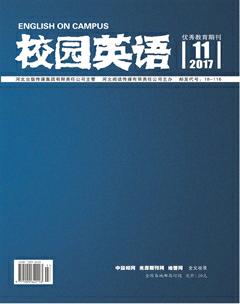Comparisons of Linguistic Competence and PragmaticCompetence
賈敏
【Abstract】Our new teaching syllabus points out the goal of ELT is to make students obtain communicative competence.Communicative competence includes linguistic competence and pragmatic competence.It is necessary for us to compare these two competences in order to find clues to enhance English teaching.
【Key words】Linguistic Competence; Pragmatic Competence
Introduction
English teaching syllabus points out the goal of ELT is to make students obtain communicative competence, which includes linguistic competence and pragmatic competence. It is necessary for us to compare these two competences in order to find clues to enhance English teaching and learning.
I. Chomskeys theory of competence
Chomsky held that “l(fā)inguistic theory is concerned primarily with an ideal speaker-listener in a completely homogeneous speech grammatically irrelevant conditions as memory limitation, distractions, shifts of attention and interest, and errors(random or characteristic) in applying his knowledge of the language in actual performance.” For Chomsky, the focus of linguistic theory was to characterize the abstract abilities speakers posses that enable them to produce grammatically correct sentences in a language. The concept competence was first proposed by Nom. Chomsky in the 1960s. According to Chomsky, competence consists of the mental representation of linguistic rules that constitute the speaker-hearers internal grammar. This grammar is implicit rather than explicit and is evident in the intuitive which the speaker-hearer has about the grammaticality of sentences.
II. Hymes theory of competence
Hymes held that linguistic theory needed to be seen as part of a more general linguistic competence the native speaker has another rule system. That is, he knows intuitively what is socially appropriate or inappropriate and can adjust his language use to such factors as the topic, situation, human relation involved etc. So he expanded the concept of competence and proposed communicative competence. His theory of communicative competence was a definition of what a speaker needs to know in order to be communicatively competent in a speech community. In Hymes view, a person who acquires communicative competence acquires both knowledge and ability for language use with respect to
(1) whether (and to what degree) something is formally possible;
(2) whether (and to what degree) something is feasible in virtue of the means of implementation available;
(3) whether (and to what degree) something is appropriate (adequate, happy, successful) in relation to a context in which it is used and evaluated;
(4) whether (and to what degree) something is in fact done, actually performed, and what its doing entails. (Hymes, 1972)
Hu Zhuang Lin summarized them as the following four components: possibility—the ability to produce grammatical sentences; feasibility—the ability to produce sentences which can be decoded by the human brain: appropriateness—the ability to use correct forms of language in a specific social-cultural context; performance—the fact that the utterance is completed. (Hu ZhuangLin, 1988).
III. Comparisons of the two theories
The first component is equal to Chomskys competence, which only emphasizes the grammatical aspect. However, Hymes emphasizes not only this grammatical correctness, but also the appropriateness of sentences. In Hymes view, the learner acquires language of sentences not only as grammatical but also as appropriate as possible. It is generally believed that the first component is the linguistic competence, that is the ability to produce grammatical sentences with knowledge, and it embodies the accuracy of language form; and the rest three components are regarded as pragmatic competence—the ability to use language to conduct an appropriate communication under a certain circumstance, and it embodies the appropriateness of language form. Then it can be summarized that communicative competence includes knowledge the speaker-hearer has of what constitutes effective language behavior in relation to particular communicative goals. That is to say, it includes both linguistic and pragmatic knowledge, and communicative competence includes learners linguistic and pragmatic competence.
Hence we can conclude that linguistic competence is the ability to produce accurate sentences with linguistic knowledge and the ability to infer the meaning of words or sentences with the help of linguistic context. Pragmatic competence is the ability to use language to achieve a specific purpose and to understand language in context. The two kinds of competence influence the effectiveness of communication in different aspects. In actual interactions, pragmatic competence is the key for the success of communication.
References:
[1]Chen Zhian.et al.2002.Contrastive English-Chinese Pragmatics and TEFL.Beijing:Foreign Language Teaching and Research Press.

